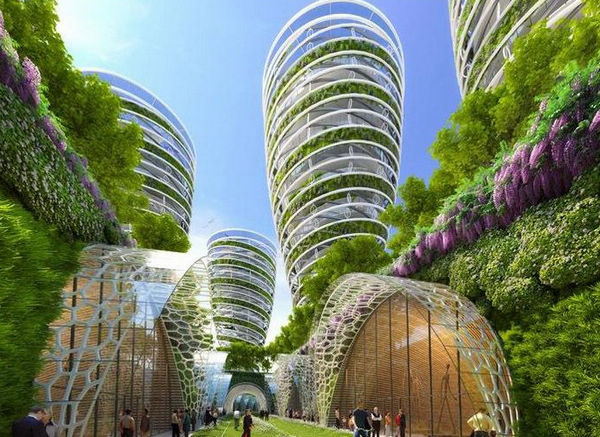Smart Buildings in Paris

With the increase of urban population, there are more and more high-rise buildings in the city. To solve the problem of housing and density in Paris, the French company Vincent Callebaut Architectures has developed a positive energy output multi-story building scheme (BEPOS). Comprised of eight mixed-use structures at various locations in Paris, the scheme addresses sustainability issues affecting each arrondissement while providing key functions for the city.
In view of the global trend of smart city construction, after the climate energy plan in Paris, it will be named smart city to reduce greenhouse gas emissions by 2050. In order to achieve long-term energy goals, the high-rise integrates multiple energy production technologies to ensure its continuous adherence to continuous efforts, as well as to encourage residents to adopt living environmental standards in their daily lives. While the technologies employed are unique to the building, the overall goal of the smart city is one of convergence: respecting Paris' rich history while embracing its potential to foster a healthier future by reducing its environmental impact.
Influenced by the Paris Smart City concept, each tower system in Paris fits into the existing urban framework. The forms and walls of these high rises are imbued with natural elements, or utilize natural facilities (passive heating and cooling, oxygenation, rainwater retention) wherever possible to create autonomous units. Furthermore, the insertion of green spaces, namely neighborhoods and suspended gardens, brings a purifying effect, bringing the countryside into urban life and encouraging residents to participate in cultivating a sustainable lifestyle. Farm skyscrapers can not only filter impurities in the air to enable crop cultivation, but also organic waste and methane gas can be used as fertilizer for plant growth, which can be recycled to produce electricity. Bridge pylons feature jellyfish silhouettes, special multi-bladed wind turbines act as hydroelectric generators to generate electricity, and heat pumps heat and cool homes. The cellular tower building is built with cheap materials, can be dotted with vegetable gardens and suspended orchards, provides fresh food for the occupants, and at the same time has insulation to reduce noise, and photovoltaic panels are installed on the roof to generate electricity. During the day, solar panels generate electricity to generate hot water, and the remaining heat is stored in the pool on the top of the building. At night, the pool flows from the top to the bottom of the building, turning the turbine to generate electricity.
In order to better save energy, in addition to passive and natural energy-saving strategies, smart cities also adopt innovative technologies. During the day, the green building tower can generate huge photovoltaic power generation and solar thermal power and hot water. At night, the reversible hydroelectric pumped storage station can supply electricity and water to the entire city, while urban gardens and residents can obtain clean circulating water through plant purification, forming a huge benign ecological urban system, thereby achieving the purpose of protecting the earth.
